Phytophthora paw patrol
As “root rot”, a deadly disease threatens plant life across the country, experts are training detection dogs to help prevent its outbreak.
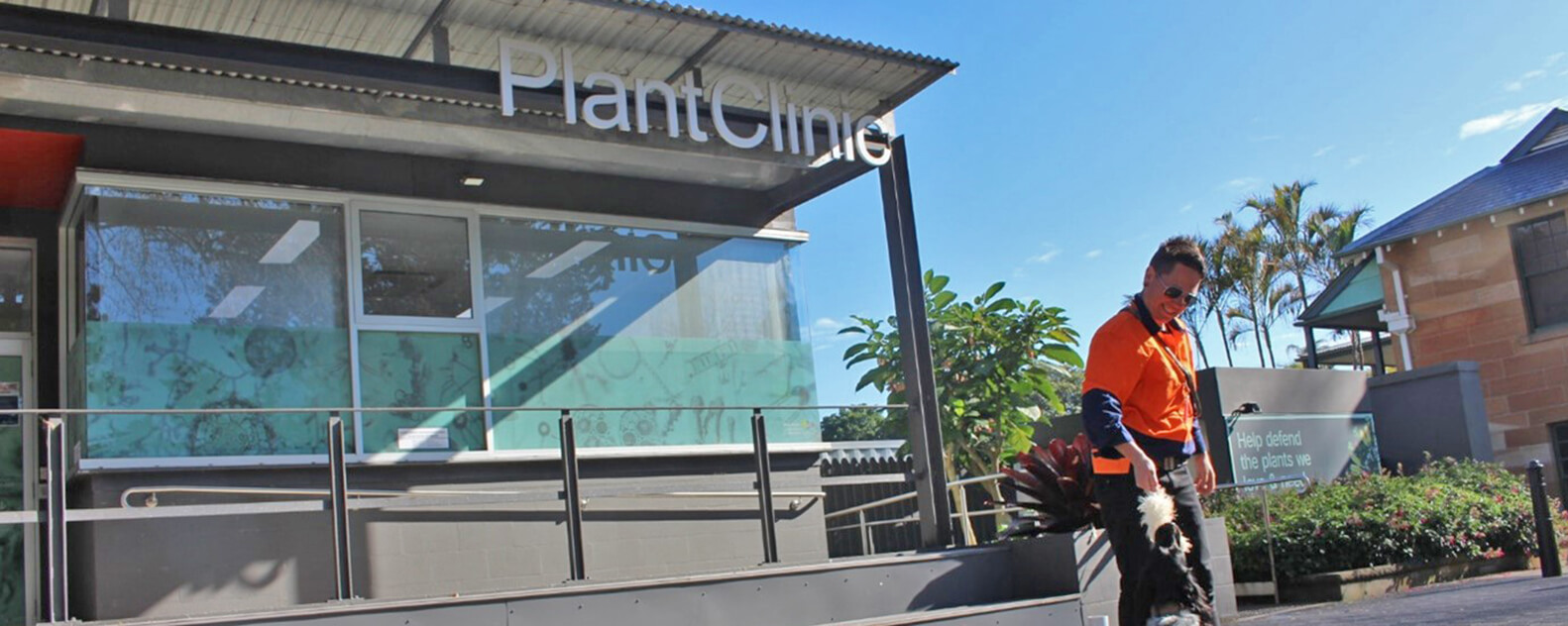
An invisible biodiversity destroyer
When soils become waterlogged, a deadly micro-organism called Phytophthora cinnamoni, can thrive. The pathogen destroys the plant’s tiny, fine roots leaving the plant unable to absorb water and nutrients. It turns its leaves pale until they wilt and fall to the ground - often reducing trees to their bare branches before they eventually die.
Commonly known as ‘root rot’, the pathogen can lurk for months or sometimes years in dry weather, lying undetected across Australia’s bushlands. Since being introduced to Western Australia in the 1900s, it has wiped out millions of trees and plants across the country.
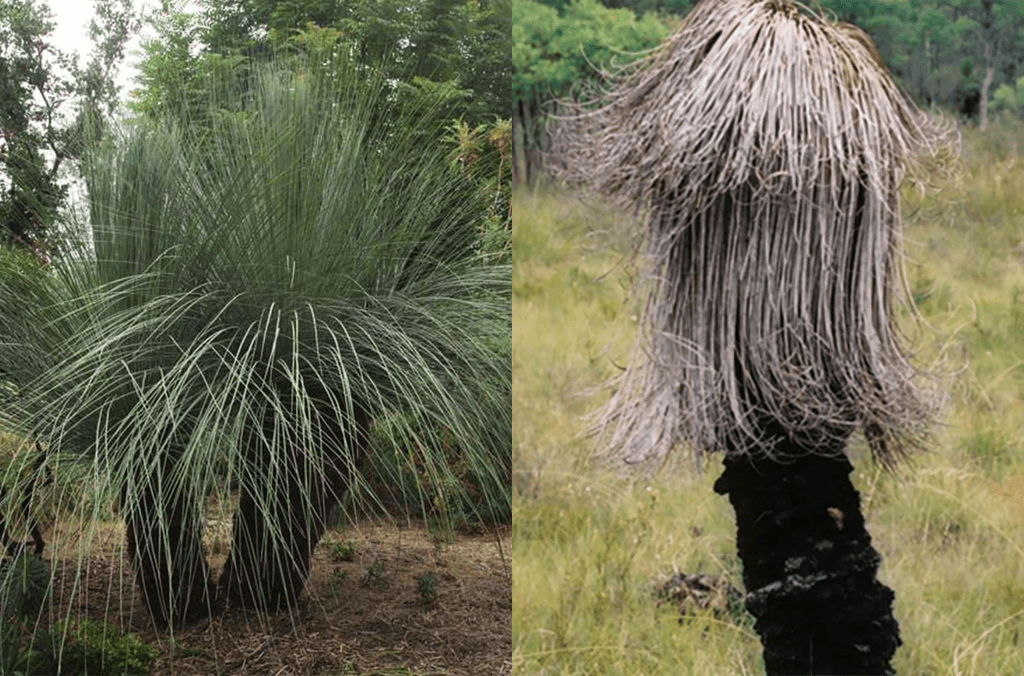
Infection of Xanthorrhoea glauca by the destructive pathogen Phytophthora cinnamomi. Credit: Keith McDougall/DPE
Mapping the destruction
The team at the Botanic Gardens of Sydney’s PlantClinic have been on the frontline of fighting this deadly disease by identifying its rampage across New South Wales and diagnosing plants with symptoms. Leading the team is PlantClinic Manager, Dr Matthew Laurence, he says Phytophthora poses an enormous threat to Australia’s biodiversity in both urban forests and natural ecosystems
“We’ve been involved in detection for translocation projects to reduce those soils and organic matter containing the pathogen being transported. However we are still seeing new dieback in New South Wales emerge, which is really concerning,” said Dr Laurence.
Because this silent killer is microscopic, humans can unknowingly spread it further. From new buildings and mining activity to bushwalking and gardening, even the tiniest of movement of soil and water can cause a deadly chain reaction.
“Phytophthora detection is the first step in any effective management program but detecting this pathogen at the landscape scale is like finding a ‘needle in a haystack’. Sniffer dogs’ have great potential as the first step in our fight against this deadly pathogen that threatens both our urban and native forests,” Dr Mathew Laurence.
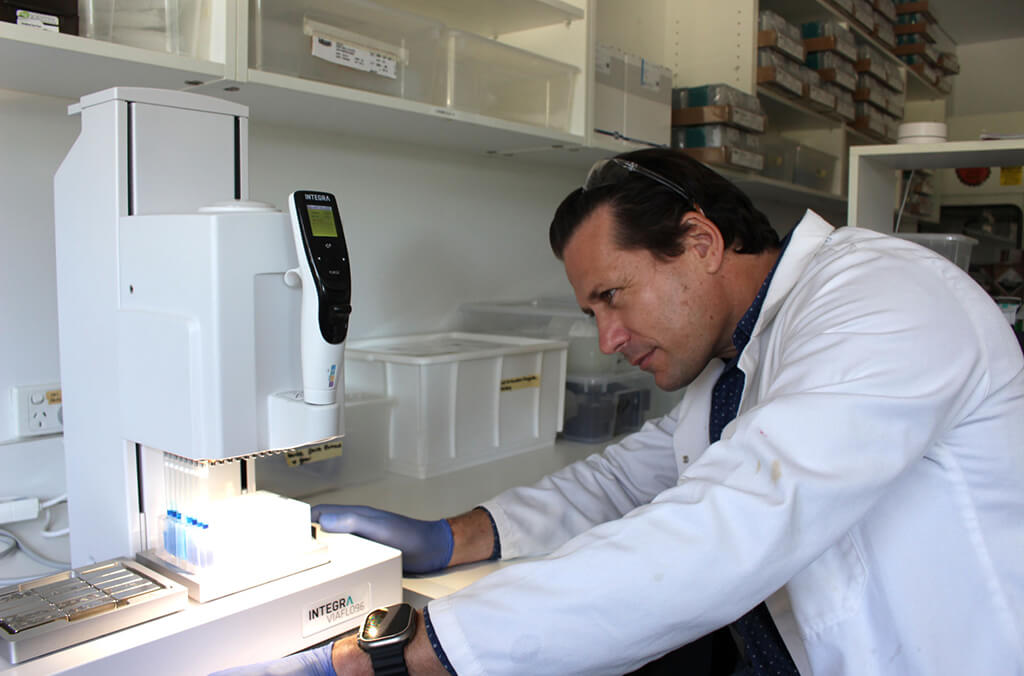
PlantClinic Manager, Dr Mathew Laurence, conducting tests inside the facility at the Royal Botanic Garden Sydney to detect the destructive micro-organism Phytophthora cinnamomi.
Unleashing Sherlock Bones
The rapid spread of Phytophthora, and its threat to unique plants and native wildlife, means experts must think outside the box for faster and broader scale detection solutions.
With funding from the NSW Government’s Saving our Species (SoS) program, Dr Laurence and the team at PlantClinic have been working with NSW National Parks and Wildlife Service, the University of Sydney & Tate Animal Training Enterprises on a two-year collaborative project to train two dogs, Alice, a Springer Spaniel, and Echo, a Brittany Spaniel to detect the pathogen using their powerful sense of smell.
Ryan Tate from TATE Animal Training Enterprises said the potential to train detection dogs to sniff out Phytophthora cinnamomi was an exciting prospect.
“Detection dogs are used to sniff out a huge range of things, including drugs, pests, cancer – even water leaks,” said Mr Tate.
“We’ve worked with the NSW National Parks and Wildlife Service on the successful use of dogs to detect other threats, including Hawkweed, and we saw an opportunity to see if the dogs could also be trained to detect Phytophthora cinnamomi.”
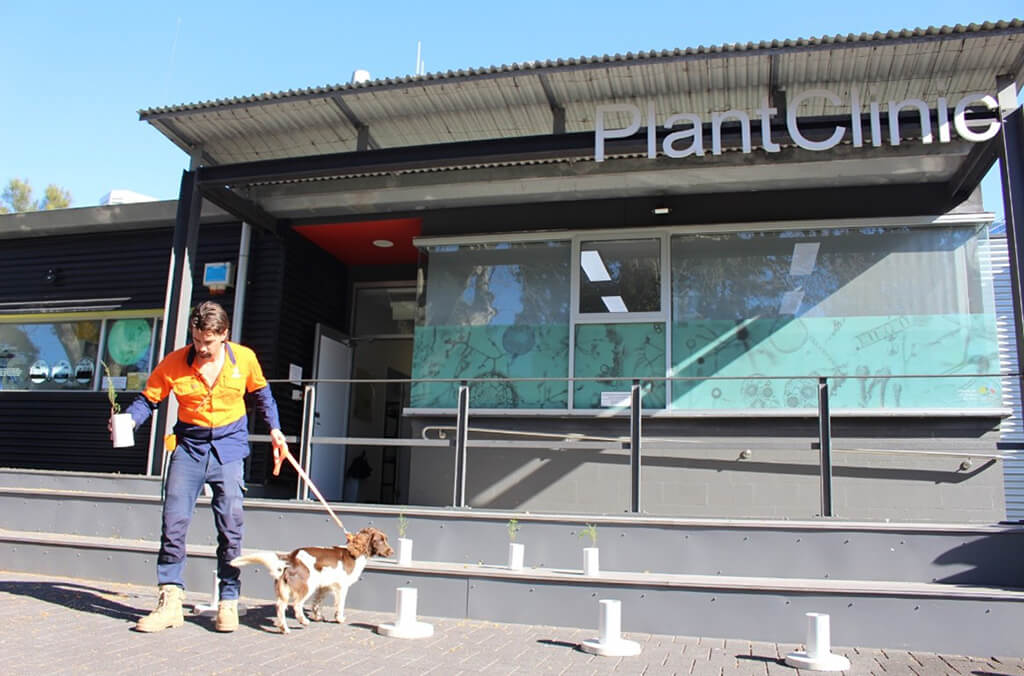
Ryan Tate from TATE Animal Training Enterprises outside of the PlantClinic at the Royal Botanic Garden Sydney conducting a test with the detection dog Alice who has successfully identified Phytophthora cinnamomi in one of the tubes.
Successfully sniffing out a silent killer
Working with Alice and Echo, the teams conducted sniff tests on native tube stock provided by the Northern Beaches Council who are working to protect the critically endangered Caley’s grevillea (Grevillea caleyi) from infection.
A subset of tube stock plants was carefully infected with Phytophthora cinnamomi by plant pathologist Professor David Guest from the University of Sydney.
After ten months of intensive training, Alice and Echo can confidently discriminate Phytophthora cinnamomi-infected tube stock from non-infected plants. Professor Guest says the dynamic detection duo are learning how to detect the pathogen lying dormant in soil, as well as on vehicles, clothing and cutting equipment.
“Trained sniffer dogs like Alice and Ecko add a rapid, accurate and inexpensive weapon in our fight to prevent the spread of this dangerous biological bulldozer,” Professor David Guest.
Not barking up the wrong tree
An additional $50,000 has been awarded to the project team under the NSW Government’s Saving our Species program, which will be used to fine-tune the dogs’ detection skills. The project team will evaluate the cost effectiveness of sniffer dogs compared to conventional techniques, in nurseries and in the field with the aim of keeping the pathogen on a short leash to protect pristine and vulnerable ecosystems.
In coming months, the team will undertake case studies in Barrington Tops National Park and Scheyville National Park, where Phytophthora poses a significant threat to several threatened plant species.
Experiments conducted by scientists at the Botanic Gardens of Sydney’s PlantClinic will be integral to determining the success rate of Alice and Echo.
The work so far shows huge potential for conservation dogs to help prevent the spread of this devastating disease across the state, particularly in high-risk pathways like nurseries, and as part of bush regeneration projects, ensuring that sites and materials are Phytophthora-free.
Related stories

For the team at the Research Centre for Ecosystem Resilience (ReCER), a request from the Blue Mountains Botanic Garden to design a hedge of the towering Nothofagus moorei, or Antarctic beech, sparked a unique collaboration between science and horticulture.
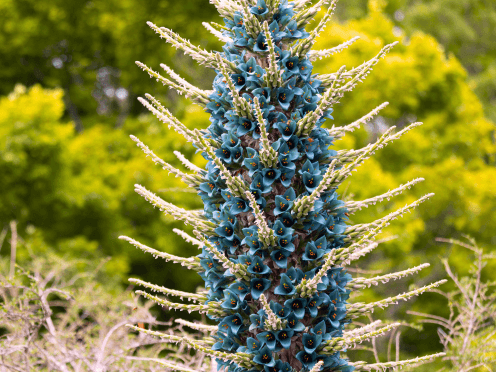
An extraordinary display of rare turquoise blooms are starting to flower at the Blue Mountains Botanic Garden Mount Tomah, with one species blooming for the first time ever.
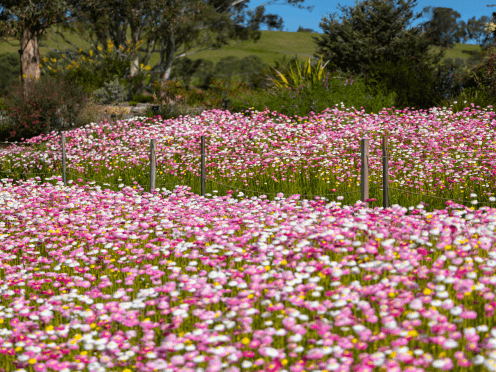
One of the largest paper daisy displays in eastern Australia is in flower at the Australian Botanic Garden Mount Annan.